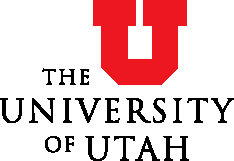Effects of Body Mass Index on the Hyperemic Response to Regadenoson
| Status: | Archived |
|---|---|
| Conditions: | Obesity Weight Loss, Hematology |
| Therapuetic Areas: | Endocrinology, Hematology |
| Healthy: | No |
| Age Range: | Any |
| Updated: | 7/1/2011 |
| Start Date: | February 2009 |
| End Date: | July 2010 |
We will test the hypothesis that a single dose of Regadenoson will produce equivalent
degrees of coronary hyperemia in patients of widely different body size. This will be a
prospective, open-label, comparative trial using MRI. Non-invasive MRI measurements of
resting flow, flow at adenosine stress (weight adjusted dosing), and flow at regadenoson
stress (single dose) will be obtained in each subject during a two hour MRI exam. 32
subjects will be recruited for this study. Inclusion criteria: 15 subjects with BMI between
20-30, and 15 subjects with BMI between 34-40. When possible, patients with suspected
coronary artery disease that will have corresponding catheterization X-ray angiography data
will be recruited to participate in this study
Introduction: Regadenoson (Lexiscan) is currently recommended for use as a targeted
vasodilator in myocardial perfusion studies and is available as a single-sized dose for all
patients. Part of the data showing that a single dose is adequate for all patients is based
on Gordi et al. [2]. That study used 36 relatively thin subjects, with a mean body mass
index BMI=24.4±3.0. Here we propose to compare the hyperemic response with MRI in two groups
of subjects, one with BMI 20-30, and another group with BMI 34-40.
MRI is the ideal test to compare the effects of regadenoson in patients with different body
mass indices (BMIs). No radiation is used and multiple perfusion tests can be performed.
Importantly, a number of researchers have shown the ability to obtain quantitative stress
and rest flow values in the heart with MR imaging, and to measure perfusion reserve. Flow
reserve measurements also can be done with dynamic PET, but not with SPECT.
In addition, regadenoson may be a more desirable agent for use with MRI than is adenosine.
Adenosine requires starting a second IV, and to use either a special expensive
MRI-compatible infusion pump to deliver the drug, or long lengths of tubing to run to a pump
outside the scanner room. Neither solution is ideal, and regadenoson would not require any
such pumps or the starting of a second IV. The work here would indicate the feasibility of
performing quantitative MRI perfusion measurements with regadenoson.
Study Design: This will be a prospective, open-label, comparative trial using MRI.
Non-invasive MRI measurements of resting flow, flow at adenosine stress, and flow at
regadenoson stress will be obtained in each subject during a two hour MRI exam.
32 subjects will be recruited for this study. The first two subjects will be imaged only
with resting perfusion, in order to determine optimal acquisition parameters for the study,
and will not be used in the analysis.
We found this trial at
1
site
University of Utah Research is a major component in the life of the U benefiting...
Click here to add this to my saved trials
